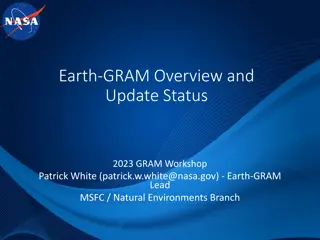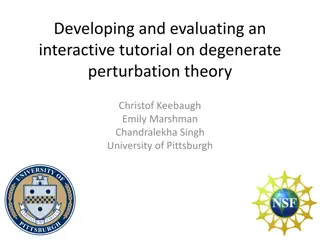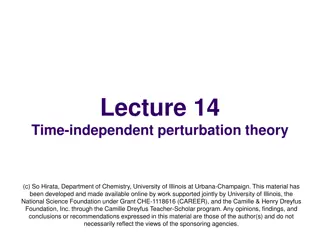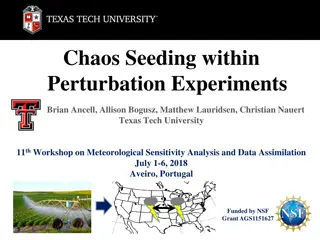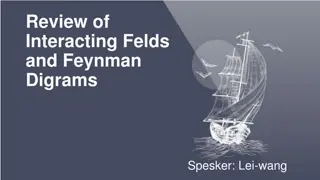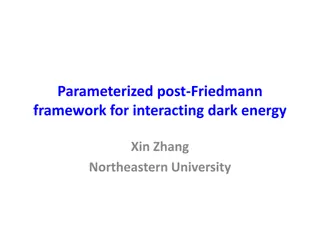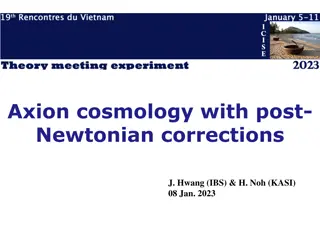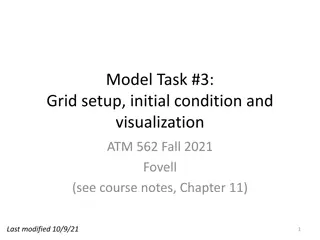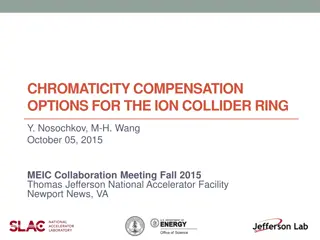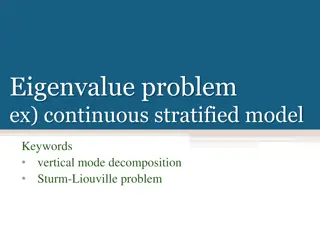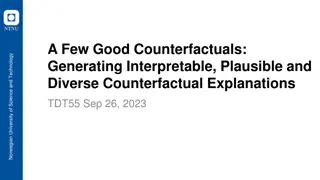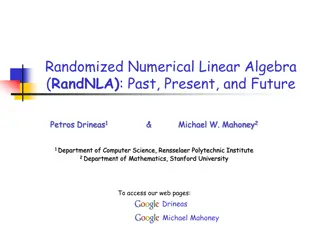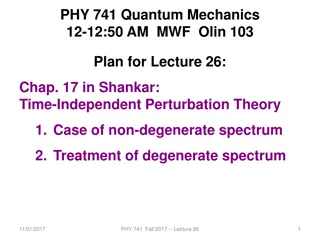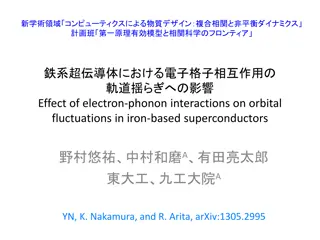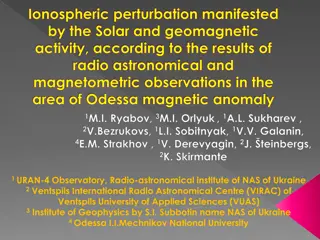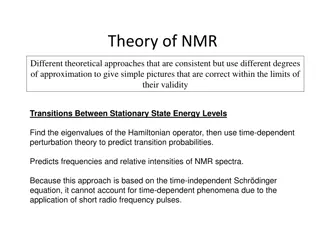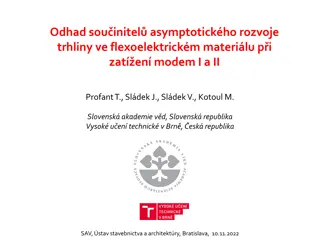
Understanding Perturbation Methods in Classical Mechanics and Electromagnetism
Explore the concept of perturbation methods in classical mechanics and electromagnetism through examples and explanations. Learn how to tackle complex differential equations by simplifying them iteratively for easier solutions and accurate trajectories. Discover the Lindstedt-Poincare method as an alternative approach for bounded systems with periodic solutions. Dive into synchrotron motion and perturbation of stable motion in this comprehensive study.
Uploaded on | 2 Views
Download Presentation

Please find below an Image/Link to download the presentation.
The content on the website is provided AS IS for your information and personal use only. It may not be sold, licensed, or shared on other websites without obtaining consent from the author. If you encounter any issues during the download, it is possible that the publisher has removed the file from their server.
You are allowed to download the files provided on this website for personal or commercial use, subject to the condition that they are used lawfully. All files are the property of their respective owners.
The content on the website is provided AS IS for your information and personal use only. It may not be sold, licensed, or shared on other websites without obtaining consent from the author.
E N D
Presentation Transcript
1 1 Perturbation Methods Jeffrey Eldred Classical Mechanics and Electromagnetism June 2018 USPAS at MSU
2 2 Direct Perturbation 2 6/8/2025 Classical Mechanics and Electromagnetism | June 2018 USPAS at MSU
3 Direct Perturbation A differential equation may be difficult (or impossible) to solve explicitly. We need to know the trajectory to calculate the force on the particle, but we need to know the force on the particle to calculate the trajectory! So one may be able to obtain a solution that is a series of simpler solutions. 1. Make a severe approximation of the differential equation that admits a simple solution for the trajectory. 2. Use that trajectory to calculate a simple force. 3. Use that simple force to calculate a new trajectory. 4. Iterate until the trajectory converges for a certain order of precision. 3 6/8/2025 Classical Mechanics and Electromagnetism | June 2018 USPAS at MSU
4 Example: Motion through a Sextupole Differential Equation: s2 = 0, S = 0: s5 =0, S2 = 0: s5 =0, S3 = 0: 4 6/8/2025 Classical Mechanics and Electromagnetism | June 2018 USPAS at MSU
5 Example: Motion through a Sextupole Differential Equation: s5 =0, S3 = 0: 5 6/8/2025 Classical Mechanics and Electromagnetism | June 2018 USPAS at MSU
6 Example: Motion through a Sextupole Differential Equation: s3 =0, S2 = 0: Imperfect Conservation of Energy: 6 6/8/2025 Classical Mechanics and Electromagnetism | June 2018 USPAS at MSU
7 7 Lindstedt-Poincare Method 7 6/8/2025 Classical Mechanics and Electromagnetism | June 2018 USPAS at MSU
8 Lindstedt-Poincare Method Like the direct perturbation method, a few differences: 1. Must be applied to a bounded system with oscillatory or periodic solutions. 2. The frequency of the oscillation itself is perturbed. 3. Energy is conserved. 8 6/8/2025 Classical Mechanics and Electromagnetism | June 2018 USPAS at MSU
Synchrotron Motion 9 9 6/8/2025 Classical Mechanics and Electromagnetism | June 2018 USPAS at MSU
Perturbation of Stable Motion Express the differential equations as a function of small angles: Write the small oscillation terms: Plug these terms into the differential equations: 10 10 6/8/2025 Classical Mechanics and Electromagnetism | June 2018 USPAS at MSU
Perturbation of Stable Motion Plug these terms into the differential equations: Match the oscillatory terms on the LHS and RHS: Solve for in the first equation and A3 in the second: 11 11 6/8/2025 Classical Mechanics and Electromagnetism | June 2018 USPAS at MSU
Slipping Motion 12 12 6/8/2025 Classical Mechanics and Electromagnetism | June 2018 USPAS at MSU
Perturbation of Slipping Motion Let s determine what the differential equation is, and then approximate it for small perturbation (large slipping rate): Perturbation terms of the form: 13 13 6/8/2025 Classical Mechanics and Electromagnetism | June 2018 USPAS at MSU
Perturbation of Slipping Motion Perturbation terms of the form: Plug into the differential equation: Solve for the coefficients 14 14 6/8/2025 Classical Mechanics and Electromagnetism | June 2018 USPAS at MSU
15 Advanced Example: Time-Dependent System Lindstedt-Poincare Perturbation for a Time-Dependent System. https://journals.aps.org/prab/pdf/10.1103/PhysRevSTAB.17.094001 There is a 2D-series expansion that results. There will be many resonances, which complicates the convergence away from small perturbations. Extra credit: Spot the error in this paper! 15 6/8/2025 Classical Mechanics and Electromagnetism | June 2018 USPAS at MSU

